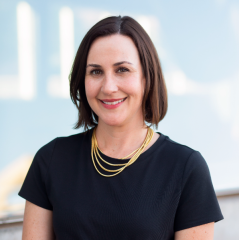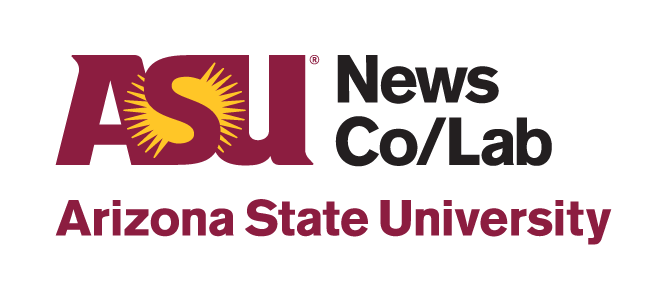Journalists: We need you as guides in the information wilderness

This blog post is the second of a follow-up series on the News Co/Lab’s community news awareness surveys.
I recently asked some Cronkite School students why they wanted to become journalists. To hold the powerful to account, one said. Because keeping people informed is a public good, said another. To tell stories that aren’t typically told, said a third. Their answers reflected how many young journalists see their role — to impart knowledge to others.
What about helping people find quality information? That didn’t come up. And a recent survey of journalists in three newsrooms from the Cronkite School’s News Co/Lab and the Center for Media Engagement at UT-Austin suggests it’s because journalists don’t necessarily see that as part of their job.
We asked journalists to rate themselves on a series of attributes related to trust and credibility, engagement and helping people understand how news works. Overall, respondents rated themselves as highly trustworthy and credible, with especially good marks on “cares about getting the facts right” and “fair in our reporting.” Not surprising: Fairness and accuracy are right there at the top of of every journalism code of ethics.
Yet the surveyed journalists were less clear on their role in helping the community locate and share factual information. Though they said they were “focused on helping people in our community,” that help did not seem to come in the form of being a guide in the wild world of digital information.
That represents a missed opportunity. There’s more than one way for journalists to ensure people are well-informed. Provide information, of course, but a journalist also could help people find better information on their own — and in doing so help to curb the spread of misinformation.
Twentieth-century journalism was an assembly-line: a reporter put together information and the audience consumed it. What the audience did after that, whether they understood it, or acted on it, was not the newsroom’s concern.
In 2018, news flows in social, networked, multi-directional ways. Communities play a much larger role in how (or whether) journalism is distributed. Credible news organizations are in a battle to claim our news feeds and our attention, fighting against an incessant stream of false news that has accelerated the erosion of trust in “the media” as an institution.
Many journalists recognize this. They engage. They realize that simply putting quality information out there is not enough. They’re seeing that peeling away at the massive onion of misinformation requires that they care not just about the supply side of news but also the demand side.
Journalists are well positioned to bridge the two sides by updating the traditional information distribution model to include helping their community locate, evaluate, act upon and even create media messages.
Sophisticated analytics programs can tell newsrooms how and where audiences find their news online. But they by and large don’t reflect the noise surrounding a piece of news — what other news sources are in a feed or search results, or in what context that piece of information was shared, for instance. That noise is likely causing people to miss or misunderstand news as it’s presented online, as well as eroding brand recognition.
By positioning themselves as a resource for cutting through the clutter, journalists can engender trust and help improve community news fluency.
Helping people find, analyze and share quality information online doesn’t have to mean formally teaching them news literacy, though research has found that people who have taken a journalism or news literacy course are more familiar with how news works and have an easier time distinguishing between news and opinion.
The same study from American Press Institute’s Media Insight Project also found that people who have interacted with journalists or have been involved in news coverage generally have positive feelings about the experience. This coincides with results from our survey of news sources for our three partner newspapers.
Newsrooms can make news literacy a part of their mission by implementing any number of new routines, or even rethinking the goals of existing routines. Here are a few suggestions, ranging from those that are fairly easy to implement to those that will require a more concerted effort. Many of the ideas have been adopted by our partner newsrooms in Fresno, Kansas City and Macon, Georgia.
– Explain how your news works. We know that many people are unfamiliar with journalistic concepts inherent to the reporting process. Newsrooms can build credibility by explaining how and why story and source decisions are made, how the editing, fact-checking and corrections process work, and who your reporters are. In demystifying the process for factual news gathering, newsrooms can distinguish themselves from less-reputable sources and help people build their own credibility scale for news sources. This is just the beginning to how you can invite the community into the process.
– Make transparency a priority. Newsrooms can extend transparency efforts by standardizing processes for labeling stories (and defining the what they mean by “news,” “opinion,” and “analysis” labels), being generous with links to source material and other resources, posting source documents, transcripts of interviews, explaining who sources are and why they are important to the story, and acknowledging what’s missing from the story and why.
– Create community conversation. Quality journalism is a community service. But so should be the process that creates the journalism. Working in service of a community means being in conversation. This can be done via useful engagement tools like Hearken and GroundSource, and also by constantly asking people what they want and need to know, from whom, and why. Conversation can also come from the answering of questions about why journalists do what they do.
– Partner with others to improve community news fluency. The misinformation crisis and distrust in the media are related problems that affect everyone in the community and require a concerted effort to remedy. Newsrooms can help. For one thing, they can convene community groups with libraries, K-12 and post-secondary educators, extension learning providers, and others interested in improving community news fluency. Our partner in Macon, Georgia, The Telegraph, has worked with the local library system to provide a news literacy train-the-trainer program. And in Kansas City, the Star is teaming with the public library on “What’s your KC Q?”, a Hearken-powered project that answers people’s questions about their city. Responses also include how they found the answers, to encourage individuals to research their own burning questions.
As News Co/Lab co-founder Eric Newton pointed out in part one of this follow-up series, most of the journalists we work with agree that it was part of their mission to help people understand how news works. Let’s extend that by helping people know how to find, analyze and act upon quality information online. Giving people tools to build healthy information diets can have many positive effects on a community, including building trust in quality journalism and helping people make informed decisions.
In my interactions with Cronkite students in the past couple of years, I’ve seen a heightened awareness of the challenge posed by the dynamic digital age of communication. From what I can see, they’re ready for the challenge. It seems a natural instinct for them to want to engage with their community in a meaningful way, and I believe they will embrace improving community news fluency as a key part of their role. They’re ready to be both messengers and guides.

Kristy Roschke, managing director of the ASU News Co/Lab, is a media scholar and educator. Her research interests include misinformation, media literacy education and media trust. Roschke has developed curriculum and taught journalism and media literacy courses at the high school and university level for nearly 20 years.
